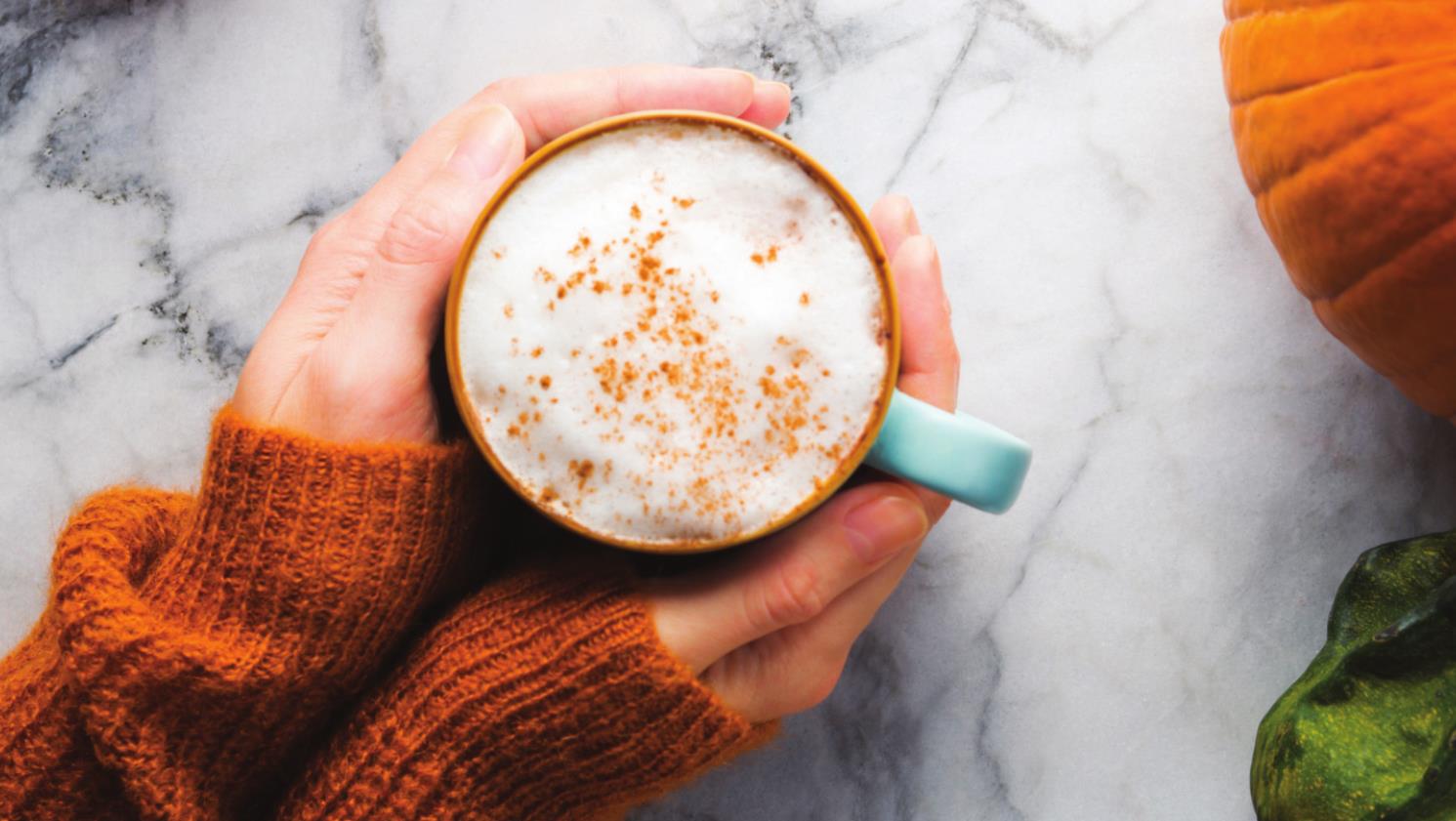For years, pumpkins and pumpkinrelated treats have been the unofficial mascot of the fall season — the king of which is the ever-popular pumpkin spice latte (PSL).
Introduced by a popular coffee empire in 2003, the PSL set off a food trend which has expanded to many favorite treats including Twinkies, cereal, various liquor and even energy bars. It even found its way into candles, air fresheners and bath bombs.
While the fad of putting pumpkin spice flavoring into any and every appropriate and not-so-appropriate treat, the base for pumpkin spice dates back to the 1950s.
According to Scientific American writer Krystal D’Costa, pumpkin spice is a blend of cinnamon, nutmeg, cloves and sometimes ginger, which gives the PSL its distinctive smell as pumpkins have no distinctive scent of their own. The spice mix itself was introduced by McCormick, but housewives likely had those spices on hand for holiday pie making already.
In the 1990s, coffee retailers began experimenting with flavored coffee, eventually introducing the PSL, without which the season would seem incomplete.
Even before the advent of pumpkin spice, pumpkins were synonymous with the fall season. In D’Costa's Scientific American article, she said it likely is rooted in our agricultural history.
When the first settlers arrived in the Americas, many most likely ate pumpkin because it was a prolific food source native to the new land. However, pumpkin pies certainly weren’t on the list of pumpkin dishes enjoyed by the settlers. Culinary technology had not yet developed the ovens or type of crust needed to produce the treat as everyone knows it today. However, a much simple type of pie may have been made.
According to D’Costa, these settlers would have eaten stewed pumpkin, roasted pumpkin and pumpkin bread or cake similar to those of the Native Americans. PUmpkin is a gourd, which means its ready to harvest in the fall and often gives a high yield — especially in the proper conditions. So during the cold months of winter, the New England settlers would use pumpkin when other options were unavailable, which is how we got things like pumpkin pie, pumpkin beer and other fall treats seen today.
The spices used also have a historical significance. D’Costa said cinnamon, nutmeg, ginger, cloves and allspice were used to flavor and preserve food for the winter. The familiar smell would be associated with harvest time and cooler weather as well as the later months when food stores would be opened.
While any historical context may be lost to time in lieu of the almighty PSL and pumpkin-flavored everything, the pumpkin’s place as the unofficial mascot of fall has been forever rooted into the American psyche. The Weatherford Daily News hopes readers enjoy the pumpkin spice scent in today’s edition.


